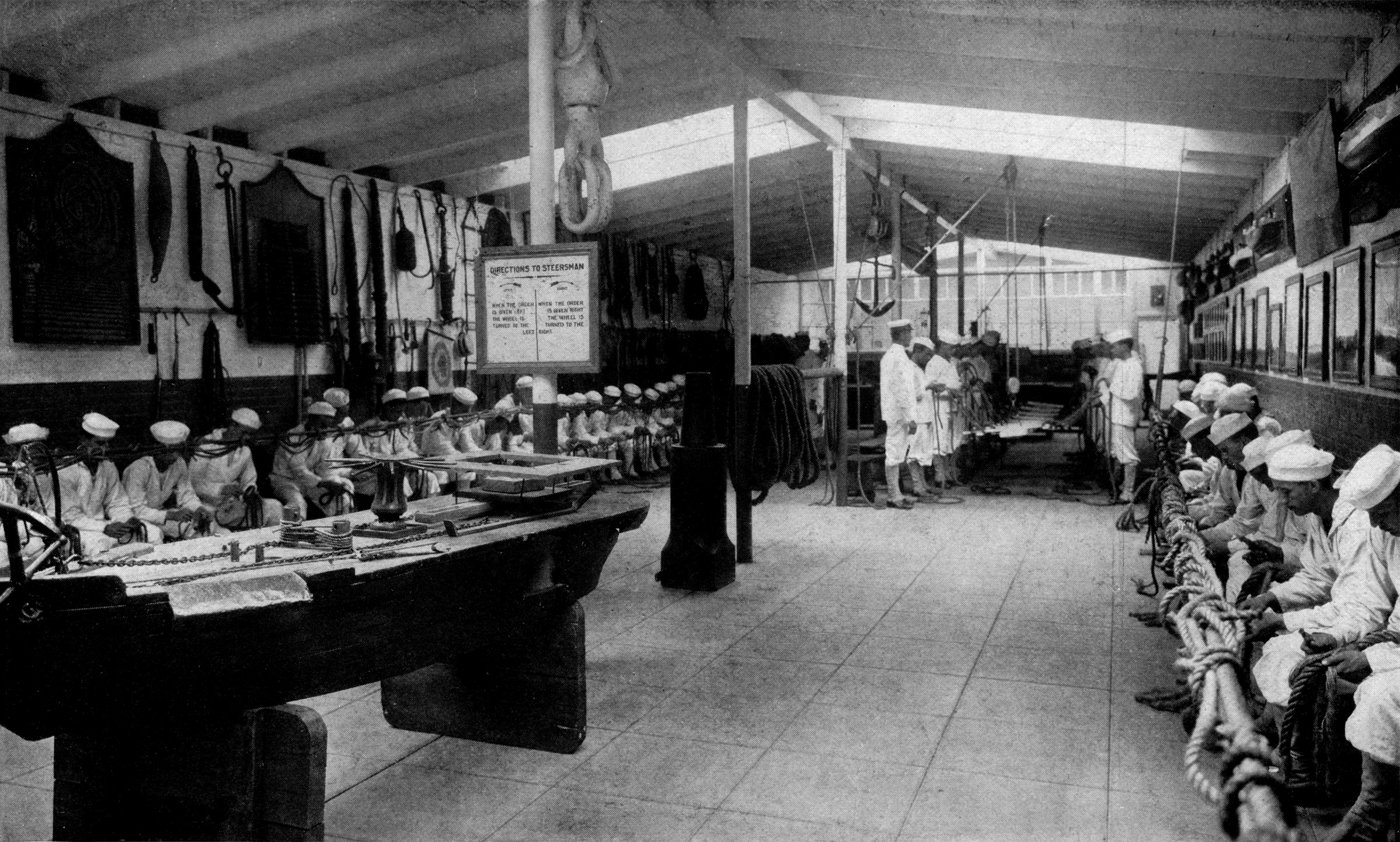Marlinespike Seamanship on:
[Wikipedia]
[Google]
[Amazon]
 Ropework or marlinespike seamanship are traditional umbrella terms for a skillset spanning the use, maintenance, and repair of
Ropework or marlinespike seamanship are traditional umbrella terms for a skillset spanning the use, maintenance, and repair of
 Ropework or marlinespike seamanship are traditional umbrella terms for a skillset spanning the use, maintenance, and repair of
Ropework or marlinespike seamanship are traditional umbrella terms for a skillset spanning the use, maintenance, and repair of rope
A rope is a group of yarns, plies, fibres, or strands that are twisted or braided together into a larger and stronger form. Ropes have tensile strength and so can be used for dragging and lifting. Rope is thicker and stronger than similar ...
. Included are tying knot
A knot is an intentional complication in cordage which may be practical or decorative, or both. Practical knots are classified by function, including hitches, bends, loop knots, and splices: a ''hitch'' fastens a rope to another object; a ' ...
s, splicing, making lashings, whippings, and proper use and storage of rope.
While the skill of a sailor
A sailor, seaman, mariner, or seafarer is a person who works aboard a watercraft as part of its crew, and may work in any one of a number of different fields that are related to the operation and maintenance of a ship.
The profession of the s ...
in the Age of Sail was often judged by how well he knew marlinespike
A marlinspike (, sometimes spelled marlin spike, marlinespike, or rchaicmarlingspike) is a tool used in marine ropework. Shaped in the form of a polished metal cone tapered to a rounded or flattened point, it is used in such tasks as unlaying ...
seamanship, the knowledge it embraces involving docking a craft, towing, making repairs underway, and more is still critical for modern seafarers.
Whippings
Awhipping knot
A whipping knot or whipping is a binding (knot), binding of twine or Whipcord#Cord, whipcord around the end of a rope to prevent its natural tendency to fray.
Some whippings are finished cleanly, as by drawing the bitter end of the cordage b ...
is a means of holding the cut end of a rope together to prevent fraying and ensure ease of use. The simplest form is the common whipping
The common whipping is the simplest type of whipping knot, a series of knots intended to stop a rope from unravelling. As it can slip off the rope easily, the common whipping should not be used for rope ends that will be handled. This whipping k ...
. Constrictor knots can serve as temporary whippings while cutting ropes, as can a few layers of adhesive tape.
Other fray-prevention techniques include back-splicing, aglet
An aglet ( ) or aiglet is a small sheath, often made of plastic or metal, attached at each end of a shoelace, a cord, or a drawstring. An aglet keeps the fibers of the lace or cord from unraveling; its firmness and narrow profile make it easier ...
s, or the application of an rubberized adhesive coating, resin, or paint to the cut end. Some modern synthetic fibers, such as nylon
Nylon is a generic designation for a family of synthetic polymers composed of polyamides ( repeating units linked by amide links).The polyamides may be aliphatic or semi-aromatic.
Nylon is a silk-like thermoplastic, generally made from pe ...
and polyester can make use of alternative methods such as fusion, which uses heat to melt the fibers to make a clean cut and permanent end; this technique cannot be used with non-melting fibers such as aramid
Aramid fibers, short for aromatic polyamide, are a class of heat-resistant and strong synthetic fibers. They are used in aerospace and military applications, for ballistic-rated body armor fabric and ballistic composites, in marine cordage, ma ...
s.
However, the rope and knotting expert Geoffrey Budworth warns against the practice of fusing thus:
Sealing rope ends this way is lazy and dangerous. A tugboat operator once sliced the palm of his hand open down to the sinews after the hardened (and obviously ''sharp'') end of a rope that had been heat-sealed pulled through his grasp. There is no substitute for a properly made whipping.
See also
* * * *References
{{Seamanship Maritime culture